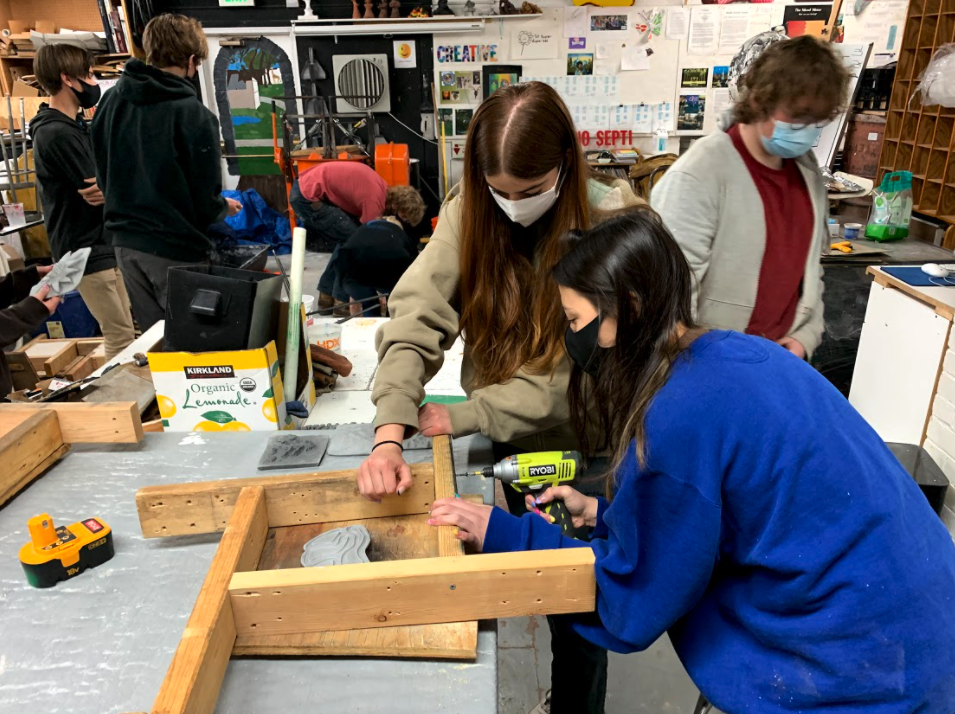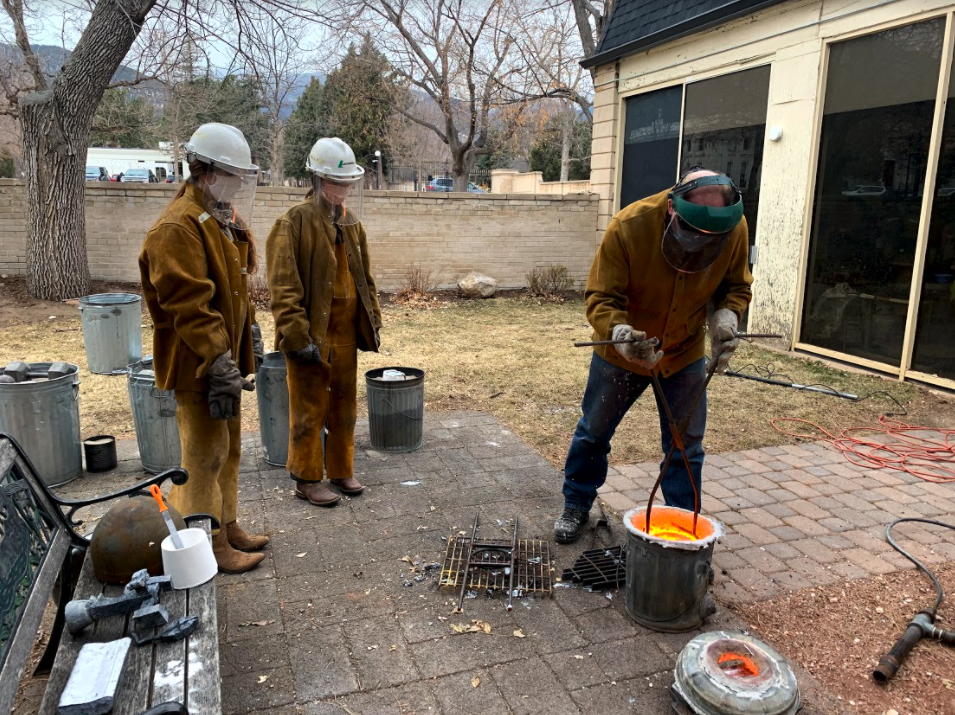
In the past few days completing week two of The Great Iron Pour ECS, we’ve worked long days and with a variety of different mediums to create and mold our own sculptures. This week, we used water clay to form sculptures. The clay is added to and subtracted from the background plane to form relief sculptures. We then built and drilled wooden box frames to envelop our pieces, which were later filled to the brim with sand to create sand molds for the upcoming Iron Pour. Afterwards, the pieces were left to solidify and harden overnight. The following morning consisted of each of us using knives to carve out channels from the sand surrounding the reliefs. We also carved keys onto the edges of the sand molds so we can easily line up the two sides. We reconstructed the frames higher onto the sand molds to prepare for the next stage of the process, which will be the second half of the mold.
We then made sculptures from a combination of styrofoam and cornstarch packing peanuts, which when wetted can firmly freeze together to be joined. After this, we worked on making sprues to be able to pour and cast aluminium into our styrofoam pieces. These sprues were painted with a mixture of graphite and alcohol to ensure the prevention of a “sandy texture” on the aluminum. The sprues, connected to the sculptures, were placed in metal bins and later filled with sand. To prepare for the pour, the aluminium was heated, and sand was poured over the styrofoam sculptures, vibrated with a sand vibrator around the edges to ensure there was sufficient pressure around the molds. Once the aluminum was melted at 1,200 degrees, the crucible was placed inside a metal tray and two people held each side carefully and quickly poured the molten aluminum into the funnel placed on top of the sand. The aluminum very quickly melted out the styrofoam, cooled and solidified. The molds were taken out of the sand after about 30 minutes and the next step will be to cut off the sprues and file and refine our sculptures.



